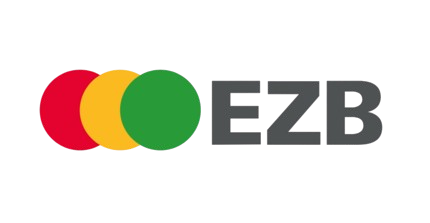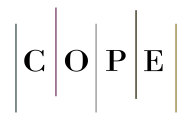Osiguranje kvaliteta visokog obrazovanja zasnovano na ishodima učenja / Higher Education Quality Assurance Based on Learning Outcomes
DOI:
https://doi.org/10.48052/19865244.2023.1.39Keywords:
higher education quality assurance, outcome-based education, student-centered educationAbstract
The quality management system at the University of Sarajevo is guided by the following principles: promotion of constant improvement of the quality of the study programmes and the application of the best educational approaches and practices. The Bologna process gives special importance to outcome based education (OBE), so learning outcomes are established as a new measure of institutional excellence, shifting a change in focus from "What should student do to successfully complete her/his studies?" to "What competences student acquired during her/his studies?" or more precisely "What can student do after finishing her/his studies?". In this paper, after basic information about outcome based education and the importance of this approach with the implementation of the Bologna process in the European Higher Education Area (EHEA), an overview of the approach to quality assurance and to study programmes improvements based on learning outcomes is given. Focus on learning outcomes enables the fundamental change of the focus from the teacher to the student, which is one of the foundations of the Standards and Guidelines for Quality Assurance in the EHEA (ESG).
References
Adam, S. (2006) „An introduction to learning outcomes“, u EUA Bologna Handbook, Froment E., Kohler J., Purser L., Wilson L. (ur.), B.2.3-1. Berlin, Raabe.
Anderson, L.W., & Krathwohl D.R. (2001) A taxonomy for learning, teaching, and assessing: a revision of Bloom’s taxonomy of educational objectives. New York: Longmans.
Berg, C., & Teichler, U. (1988). Unveiling the hidden information in credentials: a proposal to introduce a "Supplement to higher education diplomas" Higher Education in Europe, 13(3), 13–24, Taylor & Rrances Online, publikovano online: 2006, doi.org/10.1080/0379772880130303
Biggs, J. (1996). Enhancing teaching through constructive alignment. High Educ 32, 347–364, pristupljeno online 27. aprila 2023. na: https://doi.org/10.1007/BF00138871
Bloom, B.S. & Krathwohl, D.R. (1956) Taxonomy of educational objectives: the classification of educational goals. New York: Longmans,Green.
Bolonjski proces. (2003). Realising the European higher education area. Communiqué of the Conference of Ministers responsible for Higher Education in Berlin on September, 19 2003. pristupljeno online 27. aprila 2023. na: https://www.ehea.info/Upload/document/ministerial_declarations/2003_Berlin_Communique_English_577284.pdf
Bolonjski proces. (2005). The European higher education area—achieving the goals. Communiqué of the Conference of European Ministers Responsible for Higher Education, Bergen, May 19–20, 2005. pristupljeno online 27. aprila 2023. na: https://www.ehea.info/Upload/document/ministerial_declarations/2005_Bergen_Communique_english_580520.pdf
ESG. (2005). ENQA Report 2005 - Standards and Guidelines for Quality Assurance in the European Higher Education Area, pristupljeno online 27. aprila 2023. na: https://ehea.info/cid102108/quality-assurance-2003-2005.html
ESG. (2015). The Standards and Guidelines for Quality Assurance in the European Higher Education Area, European Association for Quality Assurance in Higher Education -ENQA, European Students’ Union - ESU, European University Association - EUA, European Association of Institutions in Higher Education - EURASHE, Education International - EI, BusinessEurope, European Quality Assurance Register for Higher Education – EQAR, pristupljeno online 27. aprila 2023. na: https://www.enqa.eu/wp-content/uploads/2015/11/ESG_2015.pdf
Evropska komisija (2014) Report to the European Commission on improving the quality of teaching and learning in Europe's higher education institutions, High Level Group on the Modernisation of Higher Education, Publications Office. https://data.europa.eu/doi/10.2766/42468
EC - Evropska komisija, CoE – Vijeće Evrope, UNESCO (2018). Diploma Supplement Instructions, pristupljeno online 27. aprila 2023. na: https://europa.eu/europass/system/files/2020-06/Diploma%20Supplement_Instructions.pdf
Gosling, D., & Moon, J. (2001) How to use learning outcomes and assessment criteria. London, SEEC Office.
HEA (2017). „Kriteriji za akreditaciju studijskih programa za I i II ciklus studija“, Odluka o kriterijima za akreditaciju studijskih programa prvog i drugog ciklusa studija u Bosni i Hercegovini, Agencija za razvoj visokog obrazovanja i osiguranje kvaliteta BiH, Službeni glasnik BiH, broj 47/17
HEA (2019). „Odluka o izmjenama i dopunama odluke o normama kojima se određuju minimalni standardi u području visokog obrazovanja u Bosni i Hercegovini“, Agencija za razvoj visokog obrazovanja i osiguranje kvaliteta BiH, Službeni glasnik BiH, broj 26/19
Kennedy, D., Hyland, D. & Ryan, N. (2006). „Writing and using learning outcomes: a practical guide,“ u EUA Bologna Handbook : making Bologna work / Ur: Eric Froment, - C 3.4-1, S.1–30, Berlin: Raabe
QF-EHEA. (2005). A Framework for Qualifications of the European Higher Education Area, Bologna Working Group on Qualifications Frameworks, Ministry of Science, Technology and Innovation, Denmark. pristupljeno online 27. aprila 2023. na: https://www.ehea.info/media.ehea.info/file/WG_Frameworks_qualification/71/0/050218_QF_EHEA_580710.pdf
Ryan, N. (2007). "Quality in Irish Universities". Zbornik radova - Univerzitet u Sarajevu 01:89-100.
Souto Lopez, M. & Fecteau, F. (2019). „From ESG 2005 to ESG 2015: the tightening of a cognitive framework,“ The Online Journal of Quality in Higher Education - oktobar 2019, 6:4, https://tojqih.net/journals/tojqih/articles/v06i04/v06i04-02.pdf
Tam, M. (2014): "Outcomes-based approach to quality assessment and curriculum improvement in higher education." Quality assurance in education 22, no. 2 158-168.
Downloads
Published
How to Cite
Issue
Section
License
Copyright (c) 2023 Pregled: časopis za društvena pitanja / Periodical for social issues

This work is licensed under a Creative Commons Attribution-NonCommercial 4.0 International License.














